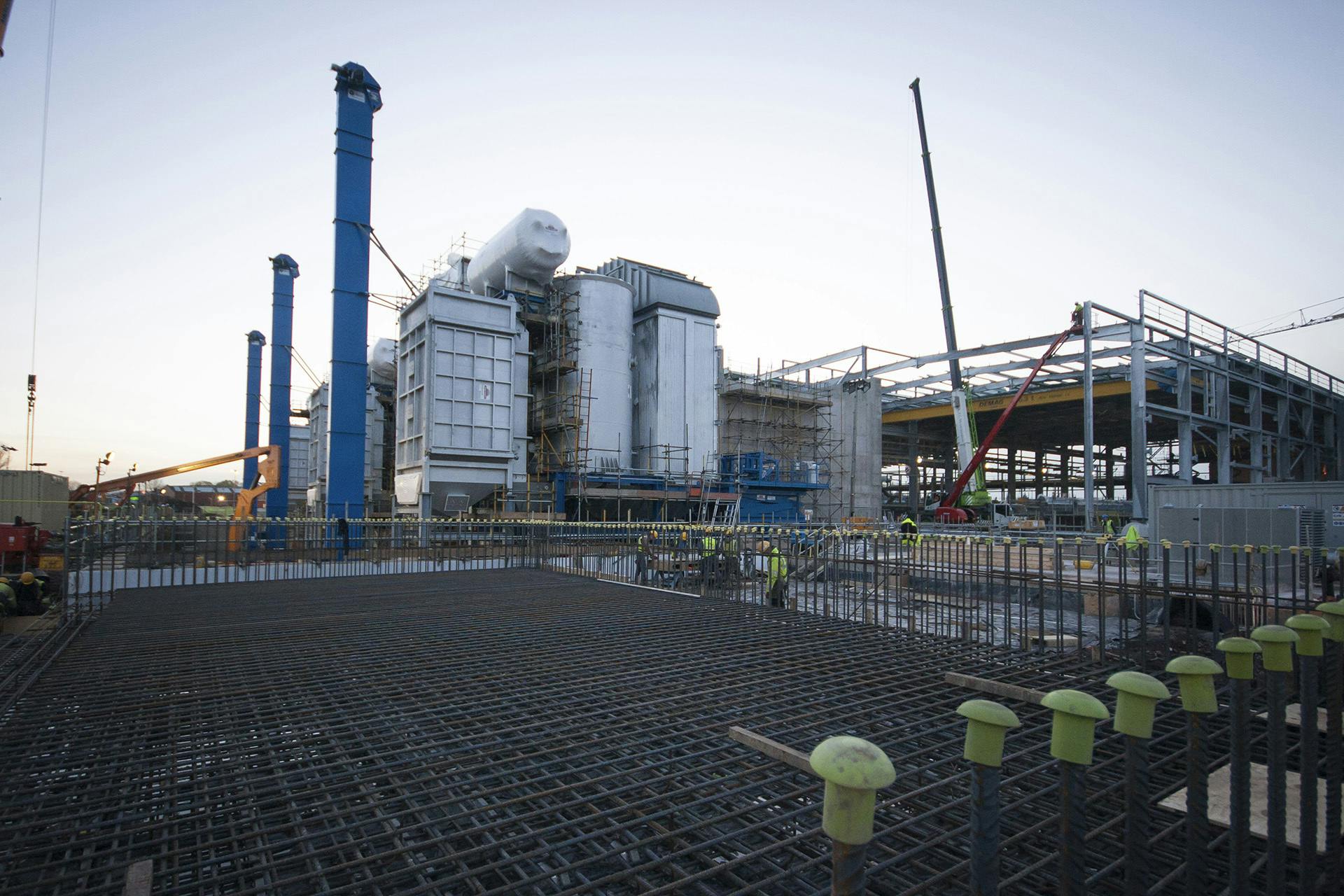
Glasgow Recycling and Renewable Energy Plant
Careys were awarded a contract to construct seven buildings to house new recycling equipment and waste sorting facilities. Our works include the construction of site drainage, foundations and substructures, ground floor slabs and retaining walls.
Client
ViridorLocation
GlasgowPrincipal Contractor
Interserve Construction LtdThis innovative project required detailed pre-construction work to ensure sustainable completion of works in keeping with the client’s overarching ethos. Once pre-construction planning was completed, our teams undertook bulk excavation works to enable the installation of floor slabs, manhole sumps, lift pits and cofferdams. Once completed, we installed foul and surface water drainage systems, in addition to process and condensate sewers that included a pumping chamber and attenuation tanks.
Our team was also responsible for construction of the building foundations, pile caps and ground beams. Following this, we constructed the floor slabs, walls and soffits for the structure, and complete the site roads and hard landscaping for the plant.
Complex installation of huge cofferdam to house attenuation tank
Complex installation of huge cofferdam to house attenuation tank
Our detailed pre-construction planning was crucial to enabling safe and efficient completion of the complex and large-scale project. Extensive quality and environmental measures were deployed to ensure that the project was delivered within the client’s specified criteria.
One of the most challenging work activities completed by our team was the construction of the collection yard where we constructed an attenuation tank under the structural slab.
This involved the installation of a 19m x 65m x 5m deep cofferdam pit using 12m deep piles and hydraulic frames. This cofferdam was constructed to enable our team to install the 3.6m diameter galvanised steel pipes which were bolted together below ground. Once the pipework was completed, the pit was filled with a bed of 30-40mm permeable stone and then topped with 75mm clean stone, enabling us to construct the structural slab on top of the tank.
This involved the installation of a 19m x 65m x 5m deep cofferdam pit using 12m deep piles and hydraulic frames. This cofferdam was constructed to enable our team to install the 3.6m diameter galvanised steel pipes which were bolted together below ground. Once the pipework was completed, the pit was filled with a bed of 30-40mm permeable stone and then topped with 75mm clean stone, enabling us to construct the structural slab on top of the tank.
This involved the installation of a 19m x 65m x 5m deep cofferdam pit using 12m deep piles and hydraulic frames. This cofferdam was constructed to enable our team to install the 3.6m diameter galvanised steel pipes which were bolted together below ground. Once the pipework was completed, the pit was filled with a bed of 30-40mm permeable stone and then topped with 75mm clean stone, enabling us to construct the structural slab on top of the tank.
The excavation of the pit and installation of the pipes presented a number of health and safety challenges due to the sheer size of the pipework. Our team undertook extensive pre-construction planning to develop a safe system of work and ensure safe access for operatives working pipework. As part of this, a unique scaffolding design was implemented to provide safe access for construction of the tanks.
As the project is a waste-to-energy project, we faced strict regulations concerning waste management on-site. Our team recycled the majority of waste on-site, making use of specific skips for different waste streams as general waste was not permitted. This required effective management and discipline of operatives in ensuring all waste was disposed of correctly. As one of the largest sub-contractors on-site, efficient management and planning enabled us to successfully meet the targets for waste disposal and recycling.
One of our major achievements was recycling over 11,000m3 of rubble from the former building and chimneys on-site which we subsequently used to form the platform foundations for the plant. This meant a significant saving to our client as it resulted in not having to import stone for the foundations.
We'd love to hear from you, so please get in touch